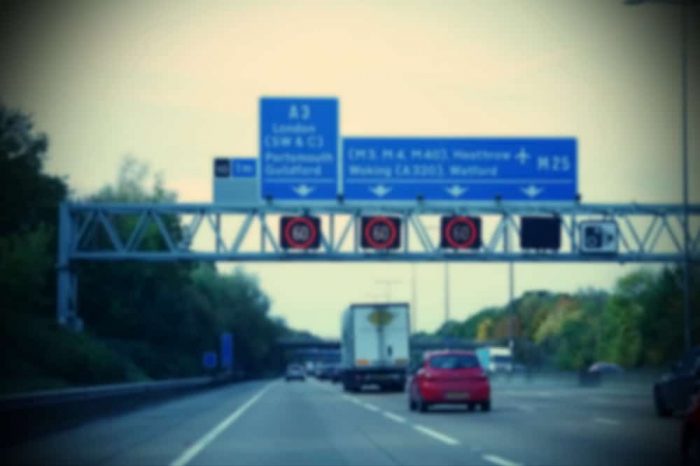Your complete guide to smart motorways
Smart motorways are becoming increasingly common throughout the UK, with billions of pounds being invested into improving the driving conditions on Britains’ roads.
Motorway traffic has been forecast to increase by up to 60% from 2010 to 2040, so the government is planning to continue its £6bn investment into the development of smart motorways.
If you’ve never experienced a smart motorway before, it’s worth learning about how they operate and how to stay safe whilst you’re driving on them.
What is a smart motorway?
A smart motorway is a section of an existing motorway that has been developed to manage the flow of traffic through the use of technology.
These technologies include traffic sensors that monitor the volume and average speed of vehicles on the road. They aim to reduce congestion and increase driving capacity on busier stretches of road.
At the same time as this, smart motorways have speed cameras installed in the gantries to help minimise speeding. In 2015, 52,516 fixed notice penalties were issued to speeding drivers, compared to only 2,023 on the same stretch of road between 2010 and 2011.
How do smart motorways work?
Each stretch of smart motorway uses technology to effectively monitor and manage the flow of traffic on the road at any given time. This technology is operated at each regional office, where controllers are able to activate or alter gantry signs in the event of congestion or an accident.
What are the downsides to smart motorways?
Many drivers feel that the cost involved with developing a smart motorway outweighs the benefits of its final construction. Take for example an 80-mile stretch of smart motorway is due to be completed within the next five years in the North West. The total cost of this construction: £1.5bn.
There will be disruptions to the normal flow of traffic throughout this construction, with many daily journeys being disrupted by average speed checks and lane closures.
Top tips for smart motorways
- It might sound obvious, but never drive in a lane with a red X in the signage above. This means that the lane has been closed and you’re at risk of being fined if you remain in this lane.
- The current speed limits of each lane are displayed in the gantries above, these help to regulate the flow of traffic, either speeding up or slowing down in the event of an accident.
- A solid white line indicates the hard shoulder, whereas a broken white lane between lanes mean you can overtake when safe. You shouldn’t drive in the hard shoulder unless directed.
- However, during busier periods of the day, traffic is able to use the hard shoulder as a lane. Initially trailed on the M42, this now applies to sections of the M1, M6, M4 and M5. When the hard shoulder is in use, you should only use the Emergency Refuge Area (ERA) in an emergency, not as a parking stop. You can identify these by the blue sign with an orange SOS symbol inside.
So there we have it, our complete guide to smart motorways, what do you think? Do you think that they make the roads safer for drivers, or do you think we’re becoming too reliant on technology?
We’d love to hear your thoughts, so do let us know in the comments below. Likewise, you can find us on Twitter here and Facebook here.
Remember, Fourways Vehicle Solutions provides corporate car rental on a national basis, so if your business is in need of short or long term vehicle hire, then get in touch with us here. A member of our team will be more than happy to help.




